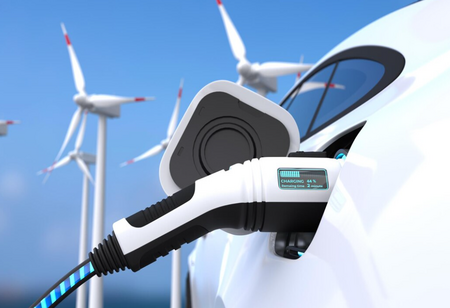To Fulfill the EV Aim, OEMs Must Rev Up the Entry Segment
By Consultants Review Team
 According to a report provided by Bain & Company, Indian OEMs must hasten the launch of new electric vehicle (EV) models in the entry-level, mass, and economy segments with affordable pricing if the EV market is to reach $100 billion in sales potential. To meet the aim, EV volumes must more than tenfold in the next six to seven years, with penetration increasing from 5% now to 40% by 2030.
According to a report provided by Bain & Company, Indian OEMs must hasten the launch of new electric vehicle (EV) models in the entry-level, mass, and economy segments with affordable pricing if the EV market is to reach $100 billion in sales potential. To meet the aim, EV volumes must more than tenfold in the next six to seven years, with penetration increasing from 5% now to 40% by 2030.
EV sales are now limited to the high end of the market, such as scooters priced above Rs 1 to 1.25 lakh, cars priced between Rs 9 and 15 lakh, and three-wheeler passenger vehicles priced over Rs 3 lakh. This has hindered EV penetration and mass adoption. According to Bain's assessment, India Electric Vehicle assessment 2023, electric cars cost around 50% more, have a 50-60% poorer range, and 30% less engine power than a comparable ICE model. This could explain why their penetration is only 1.5%.
According to the article, a Tata Tiago electric vehicle costs Rs 8.7 lakh and has a range of 250 km and 60 horsepower power. In comparison, a Tata Tiago ICE costs Rs 5.6 lakh but has a range of 600 miles and 85 horsepower. What is the exit strategy? According to the analysis, an expedited introduction of entry level electric cars at competitive pricing, along with a decrease in battery prices as the market gains scale and produces 'fit for purpose' EV first platforms for the mass market, is the need of the hour.
According to Bain, the requirement for affordable models also applies to the two-wheeler sector, which includes both electric scooters and mobikes. According to the analysis, EV scooter penetration might increase from the present 10-15% to more than 50% if this occurs. It claims that while EV scooters have already achieved 40% market penetration in the premium segment, the mass and economy segment, which accounts for 75% of the market, remains virtually untouched.
OEMs must develop automobiles that would displace leading ICE models like the Honda Activa, which costs roughly Rs 90,000. However, OEMs will face difficulties in balancing vehicle costs with a wide range of performance.
Electric motorcycles have barely 1% market penetration, but account for 60% of the whole two-wheeler market. Again, the difficulty is that most vehicles are 50% more expensive, have 25% lower top speeds, and have an 80% shorter range than ICE models. The sole criterion under which EV motorcycles are comparable is total cost of ownership. According to the survey, while luxury EV mobikes have achieved some popularity, they will struggle to match the performance of premium ICE mobikes at comparable pricing.
However, due to lower range and performance limitations, the entry level category, which accounts for over half of total mobike sales, is more conducive to EV penetration. If OEMs can match the pricing and performance of existing ICE entry-level vehicles like the Hero Splendour, EV penetration may increase much further.
Bain believes that current models cost 25% more than a CNG alternative and have a 30% lower range in the electric three-wheeler passenger space (excluding e-rickshaws), where penetration is 5-10%. A Mahindra Treo EV costs Rs 3 lakh and has a range of 140 kilometers, but a CNG-powered Piaggio Ape City costs Rs 2.3 lakh and has a range of 200 kilometers.
According to Bain, OEMs must provide electric cars at lower price points - around Rs 2.5 lakh - even if this means a lower range than CNG versions. The decreased cost will enable the use of EVs for last-mile connection within a 5-15 km radius, which includes metro stations, markets, malls, and offices, which account for 40-50 percent of all 3W passenger trips.




